20 Warehouse Automation Trends in 2024 to stay ahead
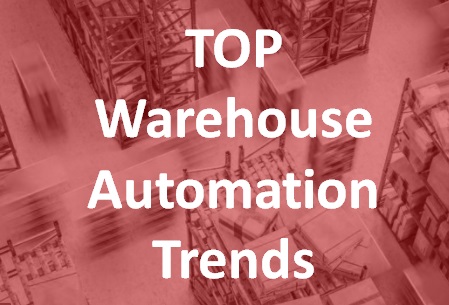 In this article, I'll talk about the latest trends in warehouse automation that you should keep an eye on. I'll introduce you to warehouse automation solutions that will keep your warehouse running smoothly.
In this article, I'll talk about the latest trends in warehouse automation that you should keep an eye on. I'll introduce you to warehouse automation solutions that will keep your warehouse running smoothly.
I know... ecommerce is still booming, we all want to buy and have same day delivery without paying for this service. 😉
The "right now" expectation is putting high pressure on the logistics chain and warehouses automation technology must evolve to survive and compete.
We can't deny it, warehouse automation brings huge benefits in terms of productivity, safety and efficiency. 🚀🚀
The best (and probably the only) way to increase a warehouse productivity is by means of automation... but what are the main innovations and trends in the warehousing industry?
Warehouse automation is a HUGE topic. In case you wish to have a wider understanding , do not miss my 54 pages free guide... there's a lot of additional info and illustrations that you will not find in this article.
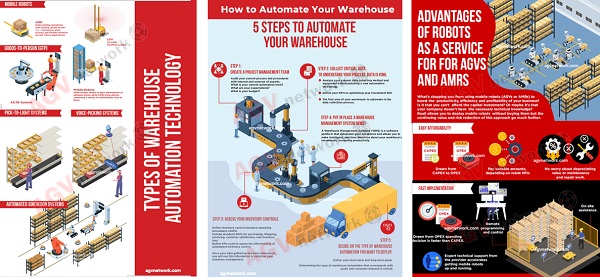
Do not miss the free guide with useful info and illustrations
| Download The Warehouse Automation Guide |
🙋🏼♂️ Let me just explain what warehosue automation is, before listing the top 20 trends.
What Is Warehouse Automation Technology?
Warehouse automation technology automate the flow of information and the movement of materials into, within, and out of warehouses to optimize the entire warehouse operation with little human interaction.
I think it is better if I show you an example....
An automated warehouse uses software and technology such as robotics and sensors to automate processes. These goods are meant to supplement existing technology, such as inventory management software.
That is to say:
✅ Warehouse automation is all about automating activities and decision-making to achieve a self-sufficient supply chain.
✅ Warehouse automation is all about automating non-value-added repetitive processes to assist warehouses in increasing productivity and accuracy, lowering labor costs, and improve safety.
To summarize, warehouse automation is composed of two primary layers:
✅ Information Technology-Related Digital Process Automation
✅ Automation of Physical Processes Associated with Equipment and Machinery
Each of these layers employs an unique set of automation technologies and solutions that are constanstly evolving into new warehouse automation tendencies.
So, to select the best one, you must first understand your company's situation, your goals, and, of course, your financial capacity.
Check this video showing another outstanding warehouse automation application.
What are the main Warehouse Automation Trends?
|
1. Cloud-based Warehouse Management Systems (WMS) 2. Mobile Robots Displacing Conveyors 3. Big Data and Analytics 4. Machine Learning (ML) in Warehouse Labor Planning Systems 5. Automated cross-docking 6. Mobile Robots as a Service (RaaS) 7. Computer Vision in Warehouses 8. Collaborative Robots (COBOTS) 9. Blockchain Technology 10. Warehouse Drones 11. Warehouse Cleaning 12. ERP Integrations 13. IoT Internet of Things 14. Smarter Layouts 15. Voice assistance 16. Wearable Augmented Reality (AR) 17. Renewable Energy and Sustainability 18. Optical Recongnition 19. Adaptability 20. Same-day shipping |
1. Cloud-based Warehouse Management Systems (WMS)

Like many other digital solutions today, warehouse management systems (WMS) can now be provided as cloud-based services – accessed via the internet.
For users, this immediately removes the great cost and upheaval of installing and maintaining servers, software and other IT resources.
Related Content: 12 Advantages of Warehouse Management System
Initial implementation and subsequent upgrades become quicker and easier, so you can immediately start gaining a return on your WMS investment
The provider takes on the entire responsibility for ensuring that your system continues to work well.
As part of the WMS subscription, your system can be automatically upgraded whenever improved software becomes available.
Cloud-based systems are much more scalable and flexible than a site-based WMS, so reconfiguring to match a company’s changing size, complexity and market conditions is easier and less costly.
Costs can be further reduced in some cases by choosing a software-as-a-service (SaaS) subscription rather than paying for software licenses.
Additional benefits associated with large and powerful cloud-based WMS providers may include their advanced cybersecurity, fast processing power and 24-hour maintenance services.
Want to learn more? check this article: Cloud WMS Advantages that will Change Your Mind
2. Mobile Robots - Displacing Conveyors
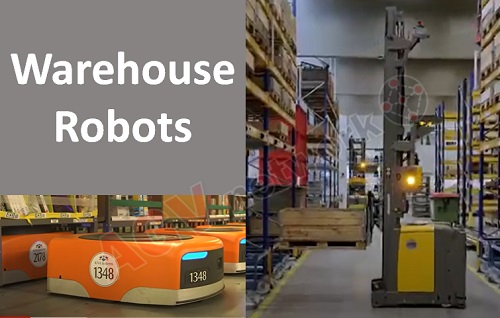
An obvious drawback of belt conveyors and similar automatic conveyance systems is that they take up a large amount of your warehouse space and obstruct travel within your premises. Their fixed structure also makes it difficult and expensive to alter your warehouse layout to meet changing needs.
In comparison, Automated Guided Vehicles (AGVs) are extremely flexible – and Autonomous Mobile Robots (AMRs) even more thanks to their autonomous navigation capabilities.
Check this out! you can download my free ebook about agvs and amrs. Available only for cool registered members 😎.
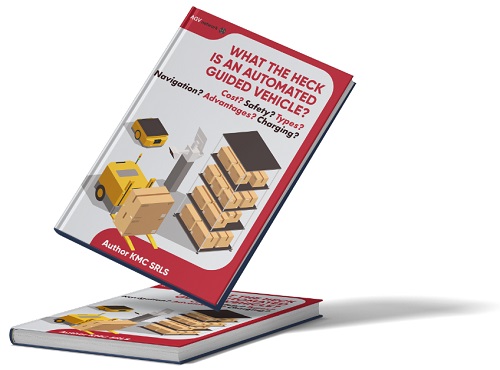
It takes much less time to introduce AGVs or AMRs to a warehouse than it does to install conveyors, so you start receiving a return on your investment (ROI) sooner. Once in use, they adapt quickly and easily to any redesign of the operation.
In fact, big players like Amazon are developing more and more mobile robots solutions aiming to minimize the utilization of fixed conveyors (when possible)
If you want to know what robots does Amazon use, do not miss this article: Amazon Warehouse Robots
While a conveyor system requires space – and often power – even when demand is low and infrequent, mobile robots can efficiently transport even the smallest of loads, as and when needed.
If an AGV or AMR requires maintenance or repair, you can simply replace it with another multi-tasking mobile robot from your fleet. By contrast, if any part of a conveyor breaks down, the whole system must be stopped.
In addition, mobile robots are very safe to use near people, while fast-moving conveyors may pose risks.
🙋🏼♂️ I'm a big fan of mobile robots, I suggest to check this article if you want to know further about all the different types of robots and their applications in the warehouses.
Today’s ‘smart’ warehouses automatically gather huge amounts of data, via scanning of goods and through use of sensors on their materials handling and other equipment.
In the past, the resulting datasets would have been overwhelming and too time-consuming to analyze completely. Now, with the availability of powerful analytics solutions, that task has become fast and automatic.
Analytics systems can detect patterns in your data which would otherwise be invisible. More importantly, they present your business with actionable information which allows optimum decision-making and improvement.
For example, from analysis of data on orders and inventory, managers can ensure the fastest possible flow of goods.
Deployment of materials handling equipment and labor can be improved, by analyzing data on warehouse activities, to maximize efficiency and production. Information on accidents and near misses can be analyzed to find root causes and identify actions needed to reduce risks.
Another of the many applications of Big Data and analytics is in monitoring the condition of your equipment and assessing the best approach to its maintenance. This minimizes downtime, reduces repair bills and extends asset life.
🔐 One of the main challenges regards Data Security and Privacy. Ensuring the security and privacy of vast amounts of data is a critical challenge, requiring robust measures to protect sensitive information from threats and breaches.
4. Machine Learning (ML) in Warehouse Labor Planning Systems
Machine learning (ML) is a branch of artificial intelligence (AI) technology in which machines are created with the ability to improve their decision-making and performance through experience.
An example of its application would be an order-picking mobile robot which learns how to handle different items in ways that avoid breakage.
ML can be used to make warehouse labor planning systems much more accurate and efficient compared to traditional approaches based on ‘engineered labor standards’ (ELS). A labor planning system aims to answer questions such as how many workers you will need to fulfil each day’s orders and how long it will take to complete a particular set of tasks.
ELS-based systems require a lot of measuring and modelling to determine average times taken, for instance. In doing so, they take only a limited number of variables into account.
With ML-based systems, there is a lot less upfront time and effort. Instead, they base their calculations on continuous analysis of finely detailed operational data drawn from a variety of sources. Working with a broader range of data and variables, they are able to consider both direct and indirect influences on operations.
As these factors change, an ML-based system modifies its calculations in response. What’s more, if your operation is redesigned in any way, the system adapts automatically to the new situation. An ELS-based system, meanwhile, has to be extensively updated with new measurements and models.
5. Automated cross-docking
Cross-docking operations in warehouses and distribution centers aim to transfer incoming goods to outbound vehicles with little or no need for storage and with minimal handling.
This time-saving and space-saving approach can be even more efficient if it is automated.
With suitable barcode or other scannable labelling of inbound packages, a hand-held scanner can quickly tell you which dock each item should be transferred to. However, time and labor can be reduced further by implementing an automated scanning and sortation system.
Transport of items from one dock to another can be achieved more efficiently by automated conveyors, rather than carrying them manually or using conventional pallet or lift trucks.
And as we have already discussed in section 2 (Mobile Robots Displacing Conveyors), AGVs and AMRs may provide a more flexible, economical and reliable solution than fixed conveyors.
For example, flexible sortation is one of the most interesting applications of Autonomous mobile robots in warehouses.
To optimize the benefits of automation in cross-docking, you need to have good information on when deliveries will be arriving, when outbound shipments are needed, and what quantities are involved.
Logistics fleet tracking tools and warehouse management systems (WMS) can provide the necessary data and enable efficient matching of labor, equipment and dock availability to demand.
The results of these automation advances include faster flow of goods, fewer errors, quicker deliveries, more satisfied customers and – through reduced labor and higher efficiency – lower costs.
6. Mobile Robots as a Service (RaaS)
Mobile robots are now within reach of many more warehouse businesses thanks to the growth of Mobile Robots as a Service (RaaS). This cloud-based subscription package approach to deploying AGVs and AMRs means you no longer need to make large capital investments to obtain their benefits. Nor do you need a high degree of technical knowledge to use them.
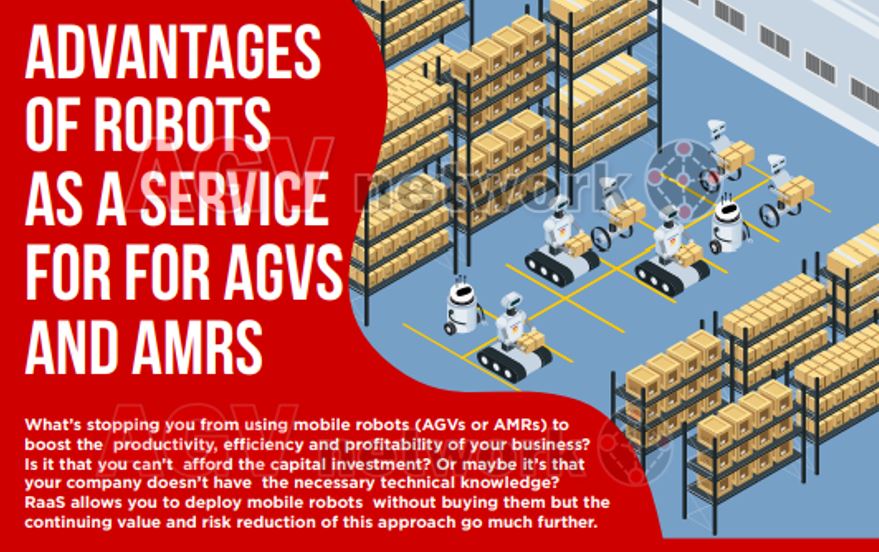
Essentially, RaaS allows you to use mobile robots without buying them. You could think of it as robot rental, but you only pay when the robots are in action like a pick, a number of missions, a defined amount of meters, etc.
Your subscription package can be tailored to include the mobile robots’ implementation, programming, control, maintenance and all other services requiring specialist engineers.
Check this article to know the differences between RaaS, Leasing or Buying a Mobile Robot.
RaaS enables your business to introduce mobile robotic efficiency quickly and at a low, predictable cost. As your needs change, due to market volatility or seasonal trends for instance, your mobile robot fleet can be upscaled and downscaled as necessary.
When new software and improved technologies emerge, your RaaS provider will update or replace your mobile robots.
Similarly, if the nature of your business changes, your mobile robots can be swapped for models better suited to your new operations.
7. Computer Vision in Warehouses
Order picking continues to present one of the major efficiency challenges in warehouses.
Picking specific individual items to fulfil each customer’s orders is extremely time-consuming compared to retrieval of whole pallet loads of goods. The need for faster and more efficient picking is intensifying as a result of e-commerce and customers’ expectations of fast delivery.
AGVs and AMRs can help to automate at least part of the order picking process. In particular, there are mobile robots designed to reduce the amount of walking or riding required by the human order picker. Some bring containers to the worker, who then picks the items needed. Others carry picked goods from pickers in each storage zone to the packing station.
The ultimate automation aim is to develop picking robot AMRs which can take the place of humans entirely. These have been available for some time, although they have had certain limitations.
They typically pick the required items using a device such as a suction pad at the end of a picking arm. This works well with boxed items, for example, but not with more complex shapes.
More recently, robots have been developed with the ability to recognize different items by their appearance and to handle them with a ‘smart gripper’. To achieve this, they are equipped with artificial intelligence (AI), machine learning (ML) capabilities and a vision system.
Using their intelligent computer vision, they can distinguish between a variety of items, mixed up in a container, and locate the one required. They then decide on the best possible route for their picking arm to reach the item, without any collision.
Their grabber adjusts to hold it securely but gently, and finally they place it with equal precision next to the other items destined for packing.
No two picks are identical, so this behavior cannot be programmed. It is only achievable through the robot’s intelligent ability to assess, interact with and learn from its environment.
Such technology promises rapid advances in AMR and other automation applications in the near future.
8. Collaborative Robots (COBOTS)
Collaborative mobile robots assist humans in picking accuracy and productivity by guiding associates through the picking process. Cobots are meant to make a worker’s life easier.
Some collaborative mobile robots optimize picking routes and tasks based on warehouse status and work priorities.
Cobots can also help in other warehouse applications such as picking, palletizing, etc.
Flexibility, reliability, scalability, reduced walking time and increased productivity are just a few of the advantages of collaborative mobile robots.
9. Blockchain Technology
Blockchain technology is a secure automated network that uses cryptography to create data transfers in blocks on a shared digital ledger.
Blockchain technology has implications for warehouse operations and inventory management because of its advanced data authentication, validation, and transparency.
Blockchain databases could enable every stakeholder in complex supply chains to connect and share permanent, automated records for every transaction, with shared data storage accessible to all users within the secure network.
10. Warehouse Drones
I personally love ❤ these Intelligent drone fleets powered by advanced algorithms linked to cloud-based WMS can assist inventory management inside warehouses.
Some warehouse drones have visual sensors or barcode scanners to track inventory and automate procedures such as cycle counting.
Checkout this short video that gives a clear idea of these awesome flying vehicles.
I have prepared an infographic with nice illustrations about the warehouse drones. You can download it for free in this link... yes, you should register first.
| Click here to download the infographic |
11. Autonomous Warehouse Cleaning
There is already a market for industrial-sized robotic floor cleaners to navigate complex warehouse layouts.
UV Disinfection Robots and Autonomous Floor Scrubbers are a new class of automated mobile cleaning robots that is emerging to safely sanitize and disinfect high-touch indoor workplaces such as warehouses and distribution centers.
12. ERP Integrations
API technology and machine learning (ML) enable automation systems to integrate with ERP suites, resulting in an end-to-end automated business platform.
Further automation and ERP technologies will free up back-office workforces to conduct more value-added, creative, and customer-focused jobs.
13. Internet of Things (IoT)
Although not strictly an emerging technology, RFID sensors continue to be a driving force behind new IoT applications that optimize supply chains and warehouse operations.
IoT increases warehouse visibility by giving real-time location data on equipment and goods.
RFID sensors' mobility, affordability, and real-time inventory monitoring capabilities provide better data collection capabilities across systems.
Everything from illumination to parcel monitoring can be enabled with the use of IoT or intelligent gadgets.
RFID tags, for example, connected to product packaging, can help trace every movement of items within the warehouse and even beyond, from which shelves inventory is located within the warehouse to where products are in transit.
When everyone has left the warehouse, intelligent lighting systems might switch off all lights or do the same for isolated rooms. It goes far beyond simple motion sensors, with exact schedules, remote access, and power-saving support.
These gadgets also capture data and transmit it in real-time, enabling wiser decisions and more proactive operations on the warehouse floor and beyond.
Here are some examples of how you can use IoT in your warehouse:
✅ You can use IoT-enabled sensors, such as Radio Frequency Identification tags, to monitor the movement of goods in your warehouse in real-time.
✅ You can use IoT technology to receive automatic updates on inventory levels; aggregated over time, this data provides valuable insight into demand and can enable more accurate forecasting, so you know which items must always be in stock.
✅ IoT powers AGVs and AMRs, many of which rely on sensor technology to navigate their way through complex warehouse floors.
14. Smarter Layouts
The overall design and layout of a warehouse and all furniture, fixtures, and pinnings are critical components of safety.
Optimizing the layout to improve safety while also increasing efficiency and productivity is difficult, but not impossible. Automation and big data can help.
Automated shelving is only the beginning since a consistent flow of data opens up far more possibilities.
Information about how the warehouse is used, where employees spend most of their time, and potential injury points can all be used to improve designs.
The layout can then be updated continuously over time with more generated data.
And, if you're wondering where all that data is coming from, much of it is sourced from the technologies we're discussing here, as well as workers, vehicles, and packages moving around the warehouse.
15. Voice Assistants
What truly elevates the "smart" technology experience is the ability to control various devices, processes, and interfaces with the sound of your Voice.
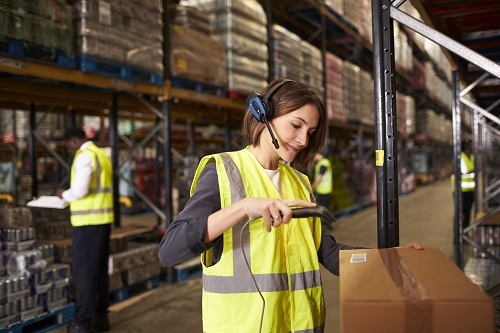
It's simple, hands-free, and intuitive. It's incredibly convenient, for example, to be able to tell Alexa to play music.
When applied to a typical facility and combined with warehouse automation, voice assistant technology can significantly improve operations and safety by reducing employee distraction.
Order picking can be completed by simply speaking into a microphone, which activates a remote bot to grab the items. Turning on and off lights, interacting with equipment, and calling for help are examples of where voice assistance technology can shine.
When combined with Augmented Reality or AR, the same assistants can present virtual content to support personnel in the real world, which leads us to the next big trend.
16. Wearable Augmented Reality (AR)
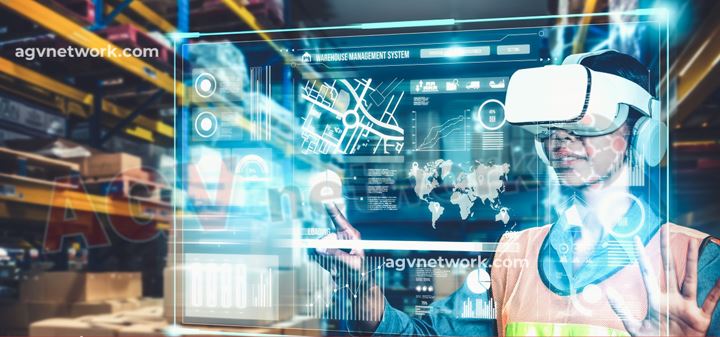
The interconnection between people and warehouse technology is one of the most noticeable features of a digitized modern warehouse and Wearables enable this.
Thanks to such technology, warehouse clerks and managers can access a wide range of information in real-time, regardless of their location, environment, or physical constraints.
Wearables are small computers that can be strapped to the wrist, head, or any other part of the body.
Smart glasses augmented reality, and voice-enabled devices are becoming increasingly popular as means of interacting with systems.
|
As a result, there will be better information flow, increased visibility, lower error rates, superior safety, and higher service levels at lower operating costs. |
Wearables can aid in the optimization of processes such as order picking, receiving, handling, high-value asset handling, cycle counting, safety, and workforce training, to name a few.
17. Renewable Energy and Sustainability
It's no secret that warehouses consume a lot of energy, especially when equipped with cold storage.
Many businesses attempt to reduce their environmental impact, improve sustainability, and reduce costs by installing renewable energy systems. Solar panels are ideal for an open and expansive warehouse roof.
Amazon, Walmart, Kohl's, Whole Foods, Target, and many other big-box retailers have already installed solar panels or wind turbines in brand facilities to offset power consumption. Amazon recently announced plans to add 26 wind and solar farms to its portfolio.
18. Optical Recognition
Optical Recognition and Sensor technology speeds up processes and boost productivity. IoT, smart cities, automobiles, laser-guided vehicles, smartphones, wearable technologies, drones, barcode readers, and other applications are at the heart of IoT.
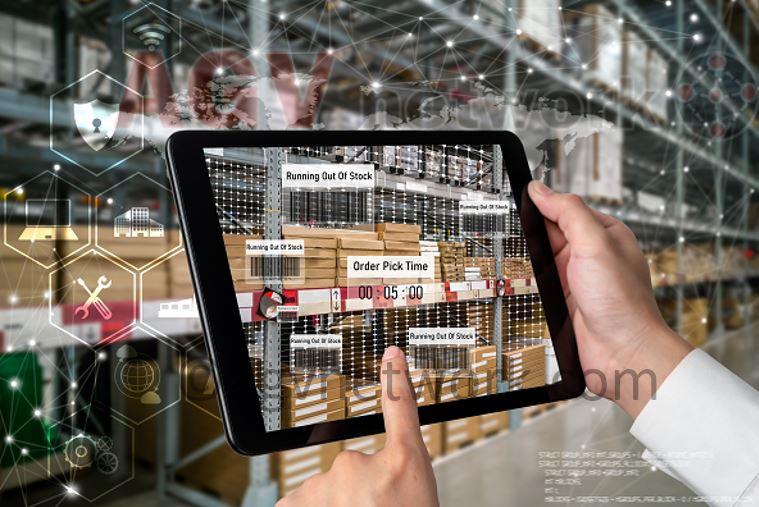
To read characters and barcodes, optical recognition devices make use of a light source. They then convert these characters into digital data.
Optical Recognition devices scan items. This scanning is sometimes done on six axes. The character recognition software then compares this image to the shapes of individual characters.
Today, sensors are used in optical recognition devices to detect and respond to a specific input-light, sound, motion, pressure, and temperature. When a sensor receives an input, it either produces an output (such as a light or an alarm) or sends the information to a network for processing.
Optical recognition sensors help with:
✅ Increasing the speed and quality of processes by examining parts for errors and rate.
✅ Providing real-time data to enable better decision-making.
✅ Managing repetitive and dangerous jobs, as well as making workplaces safer.
✅ Allowing people to focus on more complicated tasks.
✅ Reducing energy waste and establishing related intelligent industries.
19. Adaptability.
Mobility is nothing new, considering that handheld scanners have long been standard equipment in warehouses worldwide - but today's mobile technology looks a little different from what we're used to seeing.
Rather than having warehouse employees lug around bulky scanner guns, an increasing number of merchants are considering transferring scanning capabilities to sleeker devices like tablets and smartphones.
Part of the attractiveness is that mobile devices can do much more than just scan, employees may use them to clock in and out of shifts, receive precise instructions for work-related activities through text, and much more.
Best of all, if you invest in mobile enablement software, you may be able to establish a bring your device policy, saving money on equipment.
The shift from fixed desktop workstations to smartphones and mobile devices represents a significant advancement in warehouse efficiency. Today's technologies and apps significantly minimize walking time and enable warehouse staff to work and access data both within and outside the warehouse.
Smartphones free warehouse clerks from deskbound tasks and bring new levels of capabilities to typical workstations. Today's warehouse mobile solutions can provide.
|
The benefits of imaging (photos and video), tracking, cloud integration, videoconferencing, voice/face recognition, and even personal assistants open up new frontiers for the transformations these technologies can bring to warehousing operations. |
The further we go into the future, the more obvious it becomes that mobility is essential. Warehouse mobility is one of the most secure areas to invest in, as long as it is carefully designed and strategically connected with operational demands.
20. Same-day Shipping.
Customers throughout the world now anticipate same-day Shipping from all businesses, dubbed the "Amazon effect”.
It's a tall order that necessitates flawless warehouse management, but it's far from impossible with warehouse automation.
After all, from unloading and racking to selecting and packaging, every part of an automated warehouse is designed for efficiency, which means you can deliver goods from your warehouse to your customer's doorstep faster than ever before.

